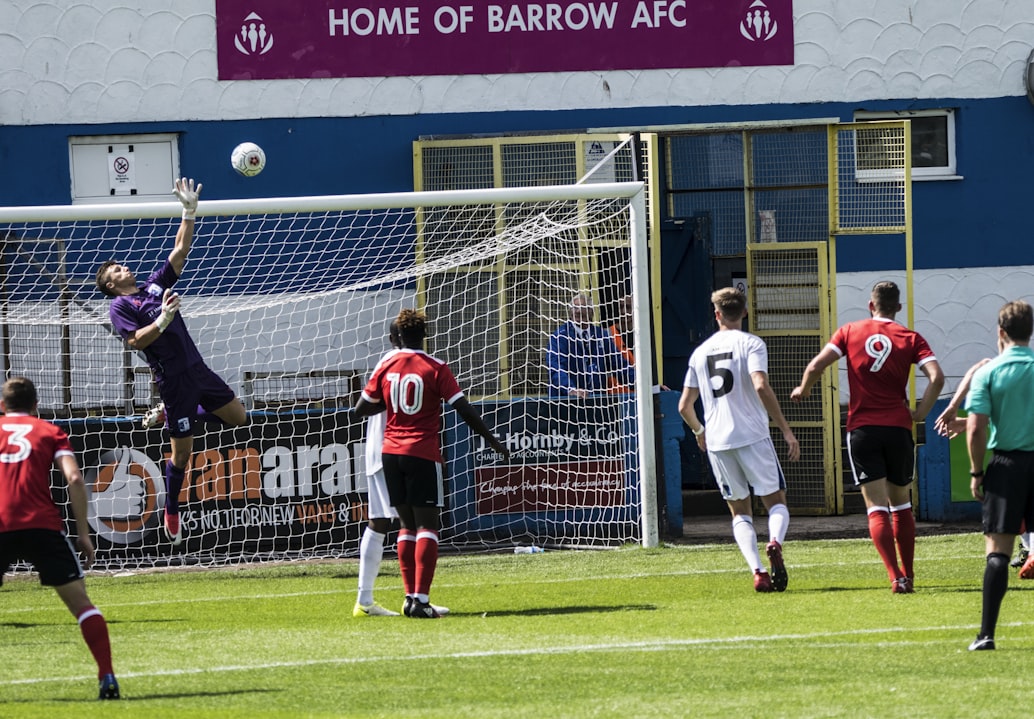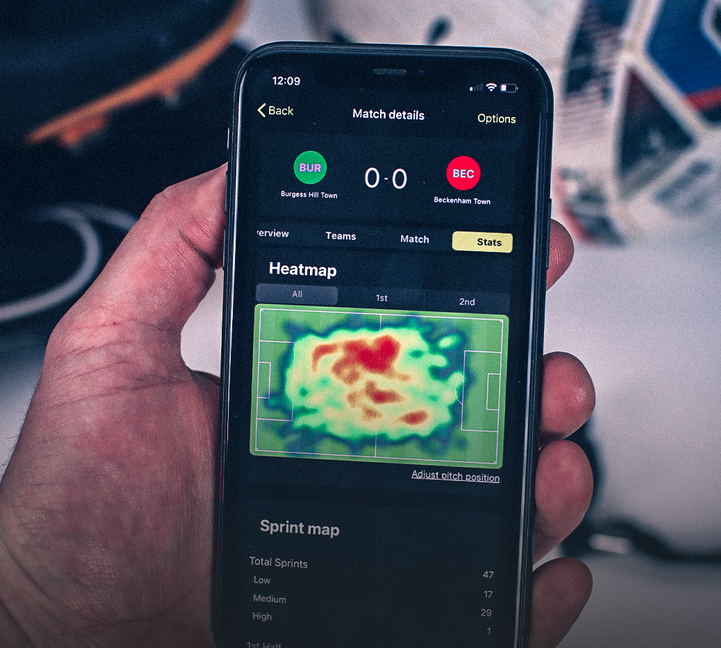In football, the goalkeeper plays a unique and irreplaceable role. He is not just the last defender on the path of the ball, but also the gatekeeper, on whom depend the odds on betting odds in non gamstop casino uk and in general the outcome of the match. Unlike field players, the goalkeeper has a number of special responsibilities that go beyond simply countering the opponent. His tasks include organising the defence, choosing his position, managing the play on the goal line and, of course, making saves - saves that can be decisive in the most intense moment of the game.
In this article we will look at the key statistical indicators used to assess the effectiveness of a goalkeeper and analyse their significance in the context of the English Premier League. We will also discuss how saves, percentage of shots deflected and clean sheets affect the overall assessment of a goalkeeper's performance and how they relate to each other.
Saves are the foundation of a goalkeeper's performance
Saves, or saves, are one of the most obvious and important indicators of a goalkeeper's performance. The term is used to describe the successful action of a goalkeeper who has prevented a goal by deflecting an opponent's shot. Every time a goalkeeper makes a save, he helps his team to keep chances alive and often prevents the game from changing.
The number of saves is not just a statistic, but an indicator of how much the goalkeeper is involved in the game. The more saves a goalkeeper makes, the more he is exposed to pressure and threats from the opponent. However, a high number of saves does not always mean that the goalkeeper's skill level is high. In some cases, it can indicate a weakness in the team's defence, which allows too many shots on goal.
Nevertheless, the number of saves remains an important criterion when evaluating a goalkeeper. It is a measure of his reaction, speed and ability to read the game. In the English Premier League, many goalkeepers have become known for their impressive saves. For example, David de Hea, the long-time unchanged goalkeeper at Manchester United, has saved his team in critical situations many times, showing exceptional reaction and agility. His goal-saving prowess has repeatedly led to him becoming the best player of the match despite the team's defeat.
However, it is important to realise that the number of saves is only one part of the overall picture. To more fully evaluate a goalkeeper's effectiveness, other metrics such as percentage of shots deflected and clean sheets must be considered. These metrics give a more complete picture of how a goalkeeper performs throughout the season and how much his play affects the team's results.
Evolution of the goalkeeper's role in football
Early in the history of football, the role of the goalkeeper was significantly different than what we see today. The goalkeeper fulfilled the function of the last defender, but his tasks were much simpler. In the early decades of football, tactics were primitive and goalkeepers often just stood on the goal line, waiting for the ball to come into their area. At that time, the emphasis was on physical strength and basic skills such as catching the ball, and the rules allowed goalkeepers to use their hands not only within the penalty area, but throughout their own half of the pitch.
Changes in rules and tactics
Over time, particularly in the 20th century, football became more organised and the role of the goalkeeper began to evolve. One of the key changes was the introduction of the offside rule and the restriction of the goalkeeper's use of his hands to only within the penalty area. These changes forced teams to rethink their tactics and goalkeepers began to play a more active role in the game.
In addition, as tactics evolved and different formations emerged, from 2-3-5 to the modern 4-4-2 and 4-3-3, goalkeepers became increasingly involved in the play of the ball. For example, goalkeepers began to act as organisers of the game when it came to playing balls from goal and launching attacks. This required them to have greater technical skill, quickness of reaction and understanding of the game.
Examples of great goalkeepers of the past
There are several iconic figures in the history of football who helped transform the role of the goalkeeper. Lev Yashin, for example, was the first goalkeeper to actively utilise the space outside his penalty area, thus foreshadowing the emergence of the modern sweeper-keeper. Gordon Banks and his famous save against Pele at the 1970 World Cup demonstrates a level of reflexes and skill that has become the standard for generations of goalkeepers to come.
Current trends
The role of the goalkeeper has continued to evolve in recent decades, especially with the advent of modern technology and data analysis. Today, the goalkeeper is not just a defender, but a key player who is actively involved in building attacks and interacting with defenders on a new level. Modern goalkeepers such as Manuel Neuer or Alisson Becker show that the goalkeeper can be not only the last line of defence, but also the first link in the attack, playing alongside the field players.
Percentage of shots deflected is a key performance indicator
The percentage of shots deflected is one of the most accurate indicators of a goalkeeper's performance. It is the ratio between the number of shots on goal and the number of saves a goalkeeper makes. Simply put, this percentage shows how many times the goalkeeper was able to save his team from a goal out of all possible attempts of the opponent to score.
A high percentage of shots saved indicates that the goalkeeper is confident in dealing with threats and shows stability throughout the match or season. Goalkeepers with a high percentage of deflected shots are often in the spotlight, as their ability to contain opponents becomes a decisive factor in games against evenly matched teams. For example, goalkeepers at clubs such as Manchester City and Liverpool regularly perform well in this aspect, which partly explains their success over the past few seasons.
On the other hand, a low percentage of deflected shots can signal problems, be it a lack of concentration, poor positioning or simply a lack of skill. However, it is important to consider the context: if a team is constantly under a lot of pressure, even the best goalkeeper may find it difficult to maintain a high percentage of deflected shots.
For an example, consider a goalkeeper like Liverpool's Alisson. His percentage of shots deflected consistently remains one of the highest in the Premier League, which speaks to his exceptional skill and ability to deal with opposing attacks. This is not only an indicator of individual skill, but also the result of the well-coordinated work of the entire team's defence.
The percentage of shots deflected is also useful for evaluating a goalkeeper in the long term. It allows coaches and analysts to track how a goalkeeper handles pressure in different conditions and against different opponents. Unlike a simple number of saves, the percentage of shots deflected takes into account not only the number of shots but also their quality, making this indicator more comprehensive and informative.
Clean sheets are a symbol of stability
The term "clean sheet" (or "dry match") in football refers to a situation when a team finishes a match without conceding a single goal. For the goalkeeper and his defenders, this achievement serves as an important indicator of their successful performance. "Clean sheet" symbolises not only the skill of the goalkeeper, but also the cohesion of the entire defence and the team's ability to control the game and minimise threats from the opponent.
The importance of clean sheets to the team
"Clean sheets have a huge importance for both the goalkeeper and the entire team. Every time a goalkeeper finishes a match without conceding a goal, it not only boosts his confidence but also boosts the morale of the entire team. "A clean sheet" indicates that the entire team, from forwards to defencemen, has performed at the highest level.
For coaches and analysts, clean sheets serve as an important indicator of a team's stability. In the context of a long season, especially in a demanding league like the English Premier League, the number of clean sheets can be a predictor of a team's success. Teams that regularly keep their gates shut tend to find themselves at the top of the stats.
Clean sheets and their relationship to defence
It is important to note that a clean sheet is not just a credit to the goalkeeper. Although the goalkeeper plays a key role in preventing goals, success in achieving a clean sheet depends on the entire defensive line of the team. Strong defence, sound tactics and team discipline play an equally important role in achieving this result.
Goalkeepers of teams such as Chelsea or Manchester City often have high clean sheets not only because of their own skills, but also because of a solid defence. In such teams, defenders effectively block shots and minimise dangerous chances, making it easier for the goalkeeper and increasing the chances of a clean sheet.
Statistics on clean sheets in the APL
Analysing statistics shows that goalkeepers who regularly achieve clean sheets tend to play for teams at the top of the stats. For example, in the 2022/2023 season, goalkeepers at clubs such as Manchester City's Ederson and Arsenal's Aaron Ramsdale had high numbers of clean sheets, which correlated directly with their teams' success.
The interrelationship of all stats
Goalkeeper statistics is a complex set of indicators that together give a complete picture of the goalkeeper's performance. The relationship between saves, the percentage of reflected shots and clean sheets allows a more accurate assessment of the goalkeeper's efficiency. Let's take a look at how these metrics are related:
Saves and Percentage of Shots Reflected. The number of saves directly affects the percentage of shots deflected. This percentage indicates how successful the goalkeeper is in dealing with threats. A high percentage of shots deflected indicates that the goalkeeper reacts effectively to shots and prevents goals. For example, if a goalkeeper makes 10 saves out of 12 shots, his percentage of shots deflected would be 83.3%, indicating a high level of skill.
Percentage of shots deflected and clean sheets. The percentage of shots deflected and the number of clean sheets are related in that a high percentage of shots deflected usually contributes to a higher number of matches completed without conceding a goal. If a goalkeeper consistently has a high percentage of shots deflected, they are more likely to finish matches with clean sheets, as their ability to deflect shots effectively reduces the number of goals conceded by the team.
Saves and clean sheets. The number of saves affects the likelihood of getting a clean sheet, as each successful save prevents a goal. However, it is important to consider that a high number of saves can also indicate weaknesses in a team's defence. A goalkeeper may have a high number of saves, but if the team often allows opponents to create dangerous chances, this can reduce the probability of a clean sheet.
Team defence and individual performance. The effectiveness of a goalkeeper also depends on the level of team defence. Even if the goalkeeper shows high individual performance, a weak team may allow many shots, which affects the number of saves and the probability of getting a clean sheet. The interaction between the goalkeeper and the defenders plays a key role in achieving success.
Balance between the goalkeeper's individual performance and teamwork
It is important to realise that a successful goalkeeper cannot rely solely on his individual performance. Football is a team game, and a goalkeeper's effectiveness depends heavily on the quality of his interactions with the defensive line and the overall tactics of the team. Even the best goalkeeper will struggle if his defence regularly allows dangerous chances.
For example, goalkeepers such as Jan Oblak of Atletico Madrid or Ederson of Manchester City are known not only for their individual abilities, but also for playing in teams with well-organised defences. This allows them to show consistent performances, such as a high percentage of shots deflected and a significant number of clean sheets. Their success on the pitch is the result of the combined efforts of the whole team.
On the other hand, even a goalkeeper with a high save percentage can have a low number of clean sheets if his team often allows dangerous chances or does not play well in defence. This emphasises the importance of team play and tactical discipline to maximise results.
Modern technology and data analysis in the goalkeeper's game
Modern football is unimaginable without the use of technology and data analysis, and this applies to the goalkeeper's performance. Video technology, such as VAR, has already become an integral part of the game, helping to fairly assess controversial moments, including those involving goalkeepers. But the impact of technology on goalkeepers' performance goes beyond that. Today, every goalkeeper's every action, from position selection to how he reacts to shots, is analysed using advanced video systems and statistical analysis.
Goalkeepers and their coaches regularly watch recordings of matches, analyse their actions and mistakes, as well as study the style of play of opponents. Video technology not only allows them to analyse specific episodes, but also to identify patterns of behaviour that can be useful in preparation for the next match. This helps to improve the level of training and develop better behavioural strategies in certain situations on the pitch.
Results
To summarise, it is important to note that goalkeeper statistics is a complex set of indicators that reflects not only the individual abilities of a player, but also his role in the overall tactics of the team. The goalkeeper is not just the last defenceman, but a key element on which the success of the team throughout the season depends.
Thus, the goalkeeper's role in football goes far beyond simply deflecting shots on goal. His job requires not only skill and quick reactions, but also the ability to interact with the team, make tactical decisions and maintain stability throughout the match.




















